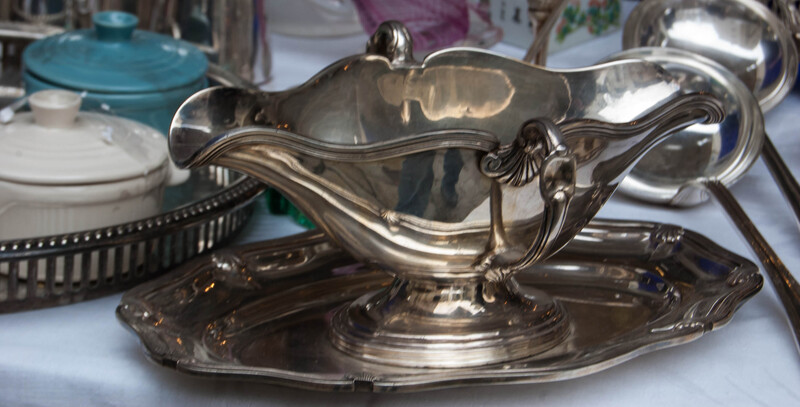Discovering Hidden Potential in Discarded Objects: An Eco-Inspired Guide
In a world overflowing with consumption, discovering hidden potential in discarded objects has never been more vital. Every year, countless items--old furniture, broken electronics, worn-out clothes--are cast aside as trash. But what if these so-called "waste" items have stories yet to tell and value yet to reveal? In this comprehensive guide, we'll explore the art and science of uncovering new value in what most people overlook.

Why Reimagine Discarded Objects?
The environmental impact of our throwaway culture is huge. Landfills are overflowing, resources are dwindling, and pollution from waste threatens our planet's well-being. By reimagining the purpose of discarded items, we not only reduce environmental harm but also tap into creative and economic opportunities. Discovering hidden potential in waste aligns with sustainable living, eco-friendly design, and the circular economy.
- Environmental Preservation: Reduces landfill usage and conserves raw materials.
- Cost Savings: Repurposing saves money otherwise spent on new items.
- Unique Creations: Upcycled items possess character and originality.
- Personal Satisfaction: There is fulfillment in transforming the old into something valuable.
Understanding the Value in Discarded Items
Many thrown-away objects still have plenty to offer. Value may not always be immediately apparent, but with a shift in mindset, we can see opportunity instead of waste. Three main strategies exist for discovering hidden potential in old objects:
- Upcycling: Transforming waste into something better or more useful than its original purpose.
- Repurposing: Giving an object a brand-new function, often unrelated to its initial use.
- Recycling: Breaking materials down for reprocessing and remanufacturing.
Popular Methods for Unlocking Potential in Discarded Objects
1. Upcycling: Creative Transformation
Upcycling is the process of converting waste materials or unwanted products into new materials or products of better quality and environment value. The possibilities are endless:
- Furniture: An old wooden pallet can become a rustic coffee table, a bookshelf, or even a vertical garden.
- Glass Jars: These can be turned into unique storage solutions, lanterns, or planters.
- Textiles: Torn jeans can transform into patchwork quilts, tote bags, or cushion covers.
- Bottles and Cans: Use as organizers, candle holders, or classy home decor.
The creativity involved in upcycling not only diverts items from landfill but also gives your home a personalized, artisanal touch.
2. Repurposing: Redefining Function
Repurposing, sometimes called reuse with a twist, involves finding new and innovative uses for objects that have exhausted their original functions. Need inspiration? Consider these ideas:
- Old Ladders: Transform a weathered ladder into a trendy bookshelf or a unique clothes rack.
- Tea Cups: Reimagine delicate china as jewelry holders or plant pots for succulents.
- Suitcases: Vintage suitcases can become stylish side tables or pet beds.
- Drawers from Abandoned Desks: Mount on the wall as shadow boxes or storage nooks.
3. Recycling: Returning to Raw Materials
When items can't be upcycled or repurposed, recycling is the next best option. While not as creative, recycling lets you extract valuable resources and reintroduce them into manufacturing. Old paper, plastics, metals, and glass are common candidates. Advanced recycling centers now process electronics, batteries, and other hazardous items.
Tools for Discovering Value in Discarded Objects
Observation and Imagination
The first step in discovering hidden potential in waste is learning to see possibilities. Train yourself to ask:
- What is structurally sound?
- What unique features does this object offer?
- How could this be used differently?
Research and Inspiration
Browse online platforms like Pinterest, Instagram, or YouTube for ingenious upcycling and repurposing projects. Many creative communities share tutorials for transforming almost anything into something new and useful.
Basic Tools and Materials
- Hand tools (saws, screwdrivers, hammers, pliers)
- Adhesives and fasteners (glue, nails, screws)
- Paint, brushes, and varnish for finishing touches
- Protective gear (gloves, goggles, masks) for safety
Discovering Economic Value in Discarded Objects
Beyond personal satisfaction and environmental benefit, there's also real financial potential in discovering value in what is thrown away. Many entrepreneurs have built businesses around upcycled and repurposed goods. Here's how:
- Craft Fairs and Online Platforms: Sell creations on Etsy, eBay, or at local markets.
- Furniture Restoration: Buy/restyle discarded furniture, then resell at a profit.
- Art Installations: Many modern artists use discarded materials to create sought-after pieces.
- DIY Services: Offer workshops or classes teaching others how to upcycle and repurpose objects.
Case Studies: From Trash to Treasure
- Katherine's Pallet Projects: Katherine, a stay-at-home mom, started collecting discarded pallets to create stylish outdoor furniture. Through clever design and social media marketing, she turned her hobby into a business and now employs others in her community.
- Art from the Dump: In Paraguay, the Landfill Harmonic Orchestra creates musical instruments from trash found in a landfill, providing underprivileged children with meaningful opportunities and inspiring people worldwide.
- Bag Up Bangladesh: Entrepreneurs in Bangladesh collect thrown-away plastic bags and recycle them into trendy, durable handbags, creating jobs and cleaning up the environment.
Practical Steps: How to Start Uncovering Hidden Value in Discarded Objects
- Start Small: Pick simple items like jars or cans and find a new use for them.
- Educate Yourself: Watch DIY tutorials, join community workshops, or collaborate with local makers.
- Plan Your Project: Sketch your ideas, gather materials, and ensure your tools are ready.
- Experiment: Don't be afraid to make mistakes; every attempt brings new knowledge.
- Share and Inspire: Display your finished work, share it on social media, or gift to friends--spread the concept of discovering the hidden value in waste.
Discovering Hidden Potential in Electronic Waste
One of the world's fastest-growing waste categories is electronic waste, or e-waste. Old phones, computers, and appliances are often thrown out, despite containing valuable metals, components, and even creative potential.
- Harvesting Components: Extract resistors, capacitors, LEDs, and more for hobby electronics.
- Art and Jewelry: Circuit boards and wires can become cool, futuristic art or jewelry pieces.
- Repair and Resale: Sometimes devices can be repaired or refurbished for secondary markets, reducing overall waste.
Best Practices for Handling E-Waste
Always check for hazardous materials and dispose of non-reuseable toxic components through certified electronics recycling facilities. Never dump e-waste in regular trash.
Community Projects: Collective Potential of Discarded Items
When communities work together, the potential for discovering value in waste multiplies. Examples include:
- Tool Libraries: Collect unused tools for community sharing, reducing waste and fostering collaboration.
- Repair Cafes: Bring together residents to fix items, exchange tips, and save resources.
- Community Art: Public sculptures or murals using local discarded objects can beautify neighborhoods and teach about sustainability.
Organizing neighborhood swap meets, donation drives, and upcycling contests can further embed the philosophy of finding new life in old items into communities.
The Psychological Benefits of Uncovering Value in Discarded Items
The process isn't only practical or environmental--it's deeply personal. Transforming forgotten items builds confidence and sparks joy. Studies show that creativity is a powerful tool for improving mental well-being, and projects that involve discovering hidden potential deliver on that promise.
- Mindfulness: Crafting and building can reduce stress and increase focus.
- Pride: Taking something destined for the dump and making it useful breeds satisfaction.
- Connection: These projects can be shared with friends, family, or community, strengthening bonds.
It's no wonder that the movement to reclaim and reuse materials is also found in therapy environments, schools, and rehabilitation programs.
Challenges and Solutions in Repurposing Waste
While the rewards are plenty, uncovering hidden potential in discarded objects does have challenges:
- Perception: Not everyone sees value in used goods. Education and inspiration are needed to shift attitudes.
- Health and Safety: Some items (chemical containers, broken glass, electronics) require careful handling.
- Time and Skill Barriers: Not everyone has immediate access to tools or the know-how for advanced projects.
Thankfully, there are solutions. Community workshops offer training and tool sharing, while online resources make learning easier than ever. Local authorities increasingly provide safe disposal for hazardous materials.

The Future of Discovering Value in Waste
As consumers grow more eco-conscious, businesses and designers are following suit. The future will see even more innovation in turning discarded items into valuable resources. Concepts like "cradle-to-cradle" design, modular products, and "right to repair" laws are changing how we view and interact with goods.
With new technologies--such as 3D printing using recycled plastics--and global awareness, the sky's the limit for repurposing waste for good. Cities and companies are launching ambitious "zero-waste" initiatives, making the practice of discovering hidden potential in discarded objects mainstream rather than niche.
Conclusion: A Call to Action
Every object has a story, a purpose, and a surprising second life waiting to be discovered. By shifting our perspectives and opening our minds to the hidden potential in discarded materials, we reduce waste, fuel creativity, and build a more sustainable future for ourselves and generations to come. Next time you're tempted to throw something away, pause--what new value might you discover in what others overlook?
Embrace the art and opportunity of discovering hidden potential in discarded objects--and watch your world transform, one creative project at a time.
